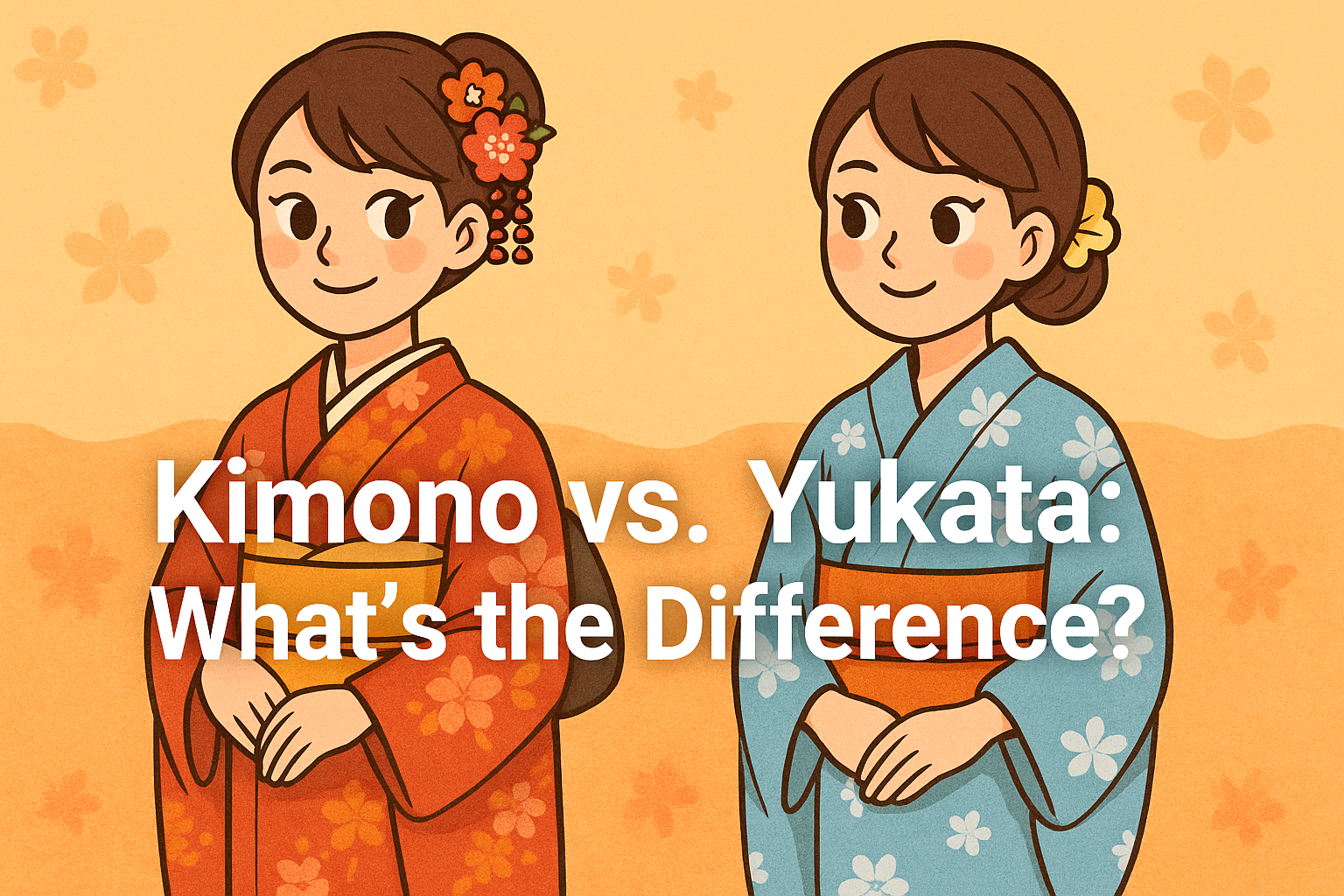👋 1. Introduction
If you’re traveling to Japan, you might see people walking through temples or attending festivals wearing beautiful traditional clothing. But how do you tell if they’re wearing a kimono or a yukata? While they may look similar, there are some key differences. Let’s explore what sets these two iconic garments apart!
👘 2. What is a Kimono?
The kimono is Japan’s most iconic traditional garment. It dates back over a thousand years and was once worn daily by both men and women. Today, it is typically reserved for formal occasions such as weddings, tea ceremonies, and graduations.
Kimonos are made of luxurious fabrics like silk, with intricate patterns that often represent the seasons or nature. They are worn with several layers and accessories, including an obi belt, inner garments, and special socks (tabi) with sandals (zori). Putting on a kimono properly takes time and practice—many people visit dressing salons for help.
🏮 3. What is a Yukata?
The yukata is a more casual version of the kimono and is typically worn in summer. Unlike the kimono, it is made of lightweight cotton or polyester and is much easier to wear.
Yukatas are popular at summer festivals (matsuri), fireworks displays (hanabi), and even at traditional inns (ryokan), where they are provided as loungewear. They require fewer layers and are tied with a simpler obi belt. Yukata designs are often colorful and festive, perfect for the lively atmosphere of Japanese summer events.
👀 4. Main Differences at a Glance
| Feature | Kimono | Yukata |
|---|---|---|
| Material | Silk, brocade, formal fabrics | Cotton or polyester |
| Season | All seasons | Summer only |
| Occasion | Formal events | Festivals, casual settings |
| Layers | Multiple layers | Single layer |
| Footwear | Zori with tabi socks | Geta, sometimes barefoot |
| Ease of Wear | Complicated, needs assistance | Easy to wear yourself |
📸 5. Where Can You Try Them?
If you want to try wearing a kimono or yukata, many rental shops in cities like Kyoto, Tokyo, and Osaka offer full dressing services. Kimono rentals are often available near historic districts and temples. During summer, yukata rentals are especially popular for festivals.
Some recommended places:
- Asakusa (Tokyo)
- Gion (Kyoto)
- Dotonbori (Osaka)
You can also find photo studios where you can dress up and take memorable photos in traditional outfits.
💡 6. Tips for First-Timers
- Weather Matters: Yukatas are great for warm weather; kimonos are better for cooler seasons.
- Formality Counts: Choose kimono for formal photos or ceremonies; go with yukata for relaxed sightseeing.
- Footwear Fit: Make sure your sandals (zori or geta) are comfortable if you plan to walk a lot.
- Confidence is Key: Don’t worry too much about getting it perfect. Locals appreciate the effort to embrace their culture!
🙌 7. Conclusion
Both kimono and yukata offer a unique glimpse into Japanese culture and fashion. Whether you’re attending a festival or visiting a temple, trying on traditional wear is a fun and memorable way to enhance your travel experience.
So which will you choose—the elegant kimono or the breezy yukata?
Either way, you’re sure to make unforgettable memories in Japan!



コメント